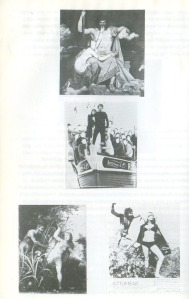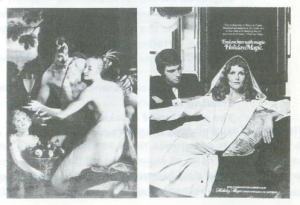I want to report one possible way of reading certain contracts. Borrowing from the way these contracts are written, I will start from the end. The contract quoted from the TOS of a company some time ago is interpreted as:
We will use your personal information for commercialization with third parties, internal use, and other things.
The way to read this interpretation is the following: If what is stated above were to happen, it seems to me that the terms of the contract below are not infringed.
Interpretation process
Excerpt of TOA
“Definition: “R&D” means research and development activities performed by on user data. These activities may include, among other things, improving our Services and/or offering new products or services to you; performing quality control activities; conducting data analysis that may lead to and/or include commercialization with a third party.
…
We may disclose to third parties, and/or use in our Services, “Aggregated Genetic and Self-Reported Information”, which is Genetic and Self-Reported Information that has been stripped of Registration Information and combined with data from a number of other users sufficient to minimize the possibility of exposing individual-level information while still providing scientific evidence. If you have given consent for your Genetic and Self-Reported Information to be used in 23andWe Research as described in the applicable Consent Document, we may include such information in Aggregated Genetic and Self-Reported Information intended to be published in peer-reviewed scientific journals. If you have given consent to participate in 23andWe Research, we may also allow research contractors to access your individual-level Genetic and/or Self-Reported Information onsite at 23andMe’s offices for the purpose of conducting scientific research, provided that all such research contractors will be supervised by 23andMe and subject to 23andMe’s access rules and guidelines. Similarly, if you have consented to use of your individual-level data in the Research Portal feature, qualified researchers (who must comply with certain requirements) may access your individual-level Genetic and/or Self-Reported Information for the purpose of scientific research, which could lead to commercial use. If you do not give consent for your Genetic and Self-Reported Information to be used in 23andWe Research or your individual-level Genetic and Self-Reported Information to be used in the Research Portal, we may still use your Genetic and/or Self-Reported Information for R&D purposes as described above, which may include disclosure of Aggregated Genetic and Self-Reported Information to third-party non-profit and/or commercial research partners who will not publish that information in a peer-reviewed scientific journal.”
Paraphrasing rules
While it is hard write down rules about how one takes in information from such a text, here are some paraphrase rules that I have applied when a more efficient text (same message, less words) could be obtained:
Interpreted version
Thus, the original contract above first becomes:
Definition
“R&D”: activities performed on user data which we do not disclose and activities which we do disclose and which are:
- commercialization with a third party
- internal use
Paragraph
[Regardless of what you do or do not do] We will use your Genetic and/or Self-Reported Information to for R&D, hence
- for [any?]things which we do not disclose
- commercialization with a third party
- internal use
[by definition of R&D] and
- third-party non-profit
- commercial research partners [who can do anything with it but] publish that information in a peer-reviewed scientific journal
[you could very well stop here, but carry on; follows what can you consent to have your information used for]
We disclose to third parties Genetic and Self-Reported Information that has been stripped of Registration Information to reduce exposing individual-level information.
We will use your Genetic and/or Self-Reported Information for R&D purposes as described above, including disclosure of Aggregated Genetic and Self-Reported Information for:
- third-party non-profit
- commercial research partners who will not publish that information in a peer-reviewed scientific journal.
If you have given consent we will:
- include Genetic & self reported information in peer-reviewed scientific journals
- allow research contractors to access your individual-level Genetic and Self-Reported Information onsite under our supervision & guidelines research
- qualified researchers (who must comply with certain requirements [like have a proper scientist beard] ) will access your individual-level Genetic and Self-Reported Information for the purpose of commercial use




